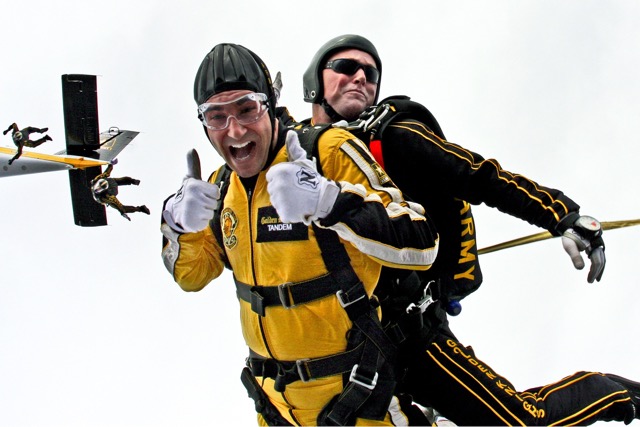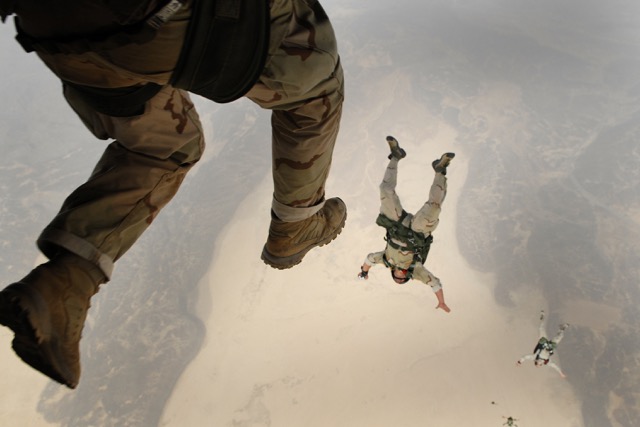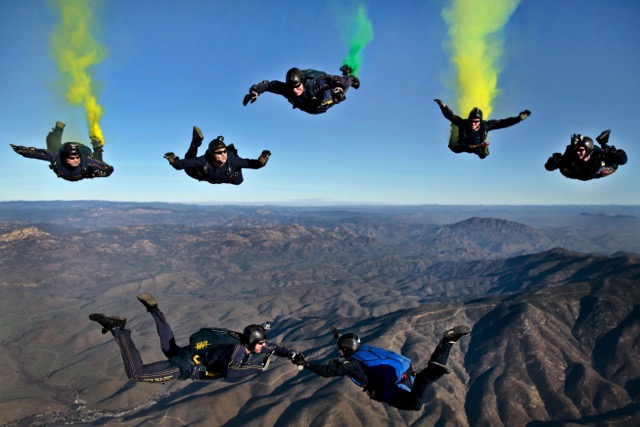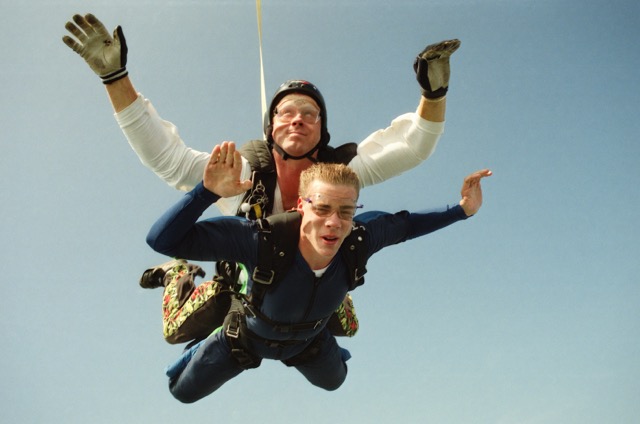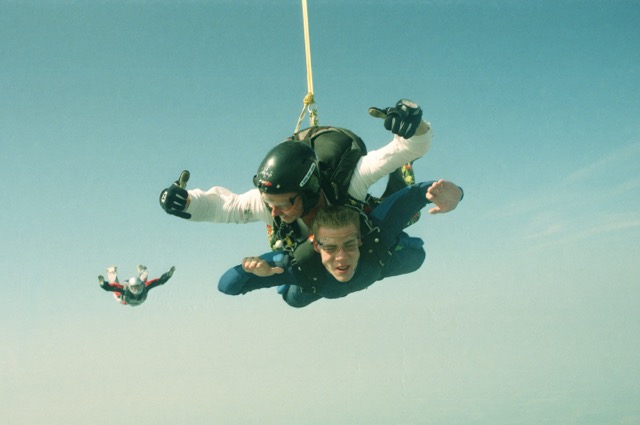Are you an adrenaline junkie looking for a new adventure? Or perhaps someone who wants to conquer their fears and experience the exhilarating rush of freefalling through the sky? Skydiving might just be the perfect activity for you! But before you strap yourself into a harness and leap out of a perfectly good airplane, it’s natural to have some concerns and questions. Is skydiving dangerous? Does it hurt? What happens if the parachute fails? Who should not go skydiving? And what is the scariest part about it? We will address each of these subheadings, providing you with all the information you need to decide if skydiving is the right adventure for you. So sit back, relax, and get ready to learn everything you ever wanted to know about the thrilling world of skydiving!
Introduction
Skydiving is an exhilarating adventure that many people dream of experiencing at least once in their lives. However, a common concern that arises when considering skydiving is whether or not it is dangerous. While there are inherent risks associated with any extreme sport, skydiving has actually become much safer in recent years thanks to advancements in technology and increased emphasis on safety procedures.
One of the reasons why skydiving is considered safer today is the strict regulations and guidelines that have been put in place by governing bodies such as the US Parachute Association (USPA). The USPA sets standards for safety, training, and equipment, ensuring that all skydivers adhere to specific protocols to minimize the risk of accidents.
Additionally, skydiving equipment itself has seen substantial improvements over the years, making the sport much safer. Strong and durable parachutes are now extensively tested and have multiple safety features built-in, including reserve parachutes to be used in case of a main parachute malfunction. Modern parachutes also have automatic activation devices (AADs) that deploy the reserve parachute if the skydiver is unable to do so.
Does Skydiving Hurt?
Skydiving is an exhilarating extreme sport that involves jumping out of an aircraft and free-falling through the sky before deploying a parachute to land safely on the ground. Many adrenaline junkies and adventure enthusiasts are drawn to this thrilling activity, but a common question often arises – does skydiving hurt? Let’s explore the various aspects of skydiving to understand if there is any pain involved in this adrenaline-fueled adventure.
First and foremost, it is important to emphatically state that skydiving, when done properly, should not hurt. During a skydive, you are strapped into a secure harness that is designed to distribute your weight evenly and minimize any discomfort. The harness fits snugly around your body, ensuring a comfortable fit and reducing the chances of any strain or injury. Additionally, professional skydiving instructors are highly trained and experienced, which reduces the likelihood of any mishaps that could lead to pain or discomfort.
Furthermore, the sensation of free-falling during a skydive is often described as more of an adrenaline rush than a painful experience. As you leap out of the aircraft, the feeling of weightlessness and the sheer thrill of defying gravity are unparalleled. The rush of wind against your body adds to the excitement, intensifying the overall experience.
What Happens if Parachute Fails While Skydiving?
Skydiving can be an exhilarating and adventurous activity for thrill-seekers. People from all walks of life take part in this extreme sport to experience the excitement of jumping out of an airplane and soaring through the sky. However, despite the many safety precautions taken, there is always a possibility of a parachute failure, and it is important to understand what happens in such a situation.
When a parachute fails while skydiving, the consequences can be quite serious. The main parachute may not fully deploy or may not open at all, leading to a malfunction. This can occur due to various reasons such as equipment failure, improper packing, or even adverse weather conditions. In such a scenario, skydivers rely on a backup parachute, also known as a reserve parachute, to save their lives.
The reserve parachute is a crucial piece of equipment that skydivers carry with them as a safety precaution. It is packed separately from the main parachute and is designed to open reliably even in the event of a main parachute failure. In case of a malfunctioning main parachute, the skydiver must quickly assess the situation and take appropriate action to deploy the reserve parachute.
- Pull the reserve handle: Skydivers are trained to reach for the reserve handle located on their harness when their main parachute fails. This action initiates the deployment of the reserve parachute.
- Prepare for sudden deceleration: As the reserve parachute opens, the skydiver will experience a sudden deceleration. This can be quite jarring and may cause a moment of discomfort.
- Control the descent: Once the reserve parachute is fully deployed, the skydiver must regain control of their descent. They will use steering toggles to navigate and land safely on the ground.
It is important to note that the reserve parachute is regularly inspected, maintained, and repacked by certified professionals to ensure its reliability. Additionally, skydivers receive extensive training on how to handle parachute failures and emergency situations to minimize the risks involved.
Skydiving is an inherently risky activity, and parachute failure is something that participants are aware of. However, with proper equipment, training, and safety protocols in place, the chances of a parachute failure are greatly reduced. Skydiving organizations and professionals prioritize safety above everything else, making sure that every skydiver is well-prepared for potential emergencies.
| Cause | Description |
|---|---|
| Equipment Failure | Faulty components or malfunctioning parts of the parachute system. |
| Improper Packing | If the parachute is not packed correctly, it may not deploy or open as intended. |
| Adverse Weather Conditions | Strong winds, rain, or thunderstorms can affect the performance of the parachute. |
| Human Error | Mistakes made during the packing process or incorrect deployment techniques. |
While the thought of a parachute failure may seem terrifying, it is essential to remember that skydiving is statistically a safe activity. The occurrence of parachute failures is relatively rare, thanks to advancements in technology, thorough training programs, and stringent safety standards. Nevertheless, it is crucial for every skydiver to be familiar with emergency procedures and to have confidence in their equipment to ensure a safe and enjoyable skydiving experience.
Who Should Not Go Skydiving?
Skydiving is an exhilarating and thrilling adventure that many people enjoy. However, it is not for everyone. There are certain individuals who should refrain from participating in this extreme sport. We will explore who should not go skydiving and the reasons behind it.
Firstly, individuals with certain medical conditions should avoid skydiving. People with heart problems, high blood pressure, epilepsy, and other serious health issues may not be physically fit to withstand the intense experience of skydiving. The sudden changes in altitude and the adrenaline rush can put a tremendous strain on the body, and individuals with these conditions may risk exacerbating their health problems.
Secondly, pregnant women should refrain from skydiving. The safety of the unborn child is paramount, and subjecting the baby to the physical stress and potential impact of a skydiving jump is highly discouraged. It is important for pregnant women to prioritize the well-being of themselves and their unborn child over any thrill-seeking activities.
- People with a fear of heights:
- Individuals who have an extreme fear of heights, also known as acrophobia, should not attempt skydiving. Being in a plane at high altitudes and jumping out into the open sky can be an overwhelming experience for those with this phobia. Skydiving requires a certain level of mental strength and a willingness to confront one’s fears.
- People with a fear of heights may put themselves and their instructors at risk by panicking or freezing during the jump. It is essential to be in a calm and composed state during the entire skydiving experience in order to ensure safety.
Lastly, people with existing injuries or recent surgeries should avoid skydiving. The physical stress from a jump and the potential impact upon landing can worsen injuries or cause further damage. It is essential to consult a healthcare professional and obtain clearance before considering skydiving if you have any existing injuries or are recovering from a recent surgery.
What Is the Scariest Part About Skydiving?
Skydiving is an exhilarating sport that can give you an adrenaline rush like no other. However, despite its popularity, many people are still on the fence about trying it due to the fear associated with jumping out of a perfectly good airplane. So, what is the scariest part about skydiving? Let’s explore some of the aspects that may make even the bravest of souls think twice before taking the leap.
The Freefall: One of the most intimidating parts of skydiving is the initial freefall. As soon as you jump out of the plane, you experience a few seconds of pure freefall without any support. The feeling of plummeting through the sky at high speeds can be both thrilling and terrifying at the same time. It’s a moment of complete surrender to gravity, and for many, it’s the scariest part of the entire experience.
The Unknown: Another aspect that can create apprehension in potential skydivers is the fear of the unknown. When you are up in the air, thousands of feet above the ground, you are venturing into a realm where your body is not naturally accustomed to being. The thought of being so far above the Earth with nothing but a thin layer of fabric and some cords to keep you safe can be nerve-wracking. The uncertainty of what lies ahead can make anyone’s heart race.
The Parachute Opening: While many people might assume that the scariest part of skydiving is the freefall, some may argue that it’s actually the moment when the parachute opens. The sudden deceleration and shift from the intense rush of freefall to a peaceful canopy ride can be a shock to the system. The force exerted on the body as the parachute deploys can be intense, and the noise and jolt can leave you momentarily breathless. It’s a moment that tests your trust in the equipment and can be quite intimidating.

